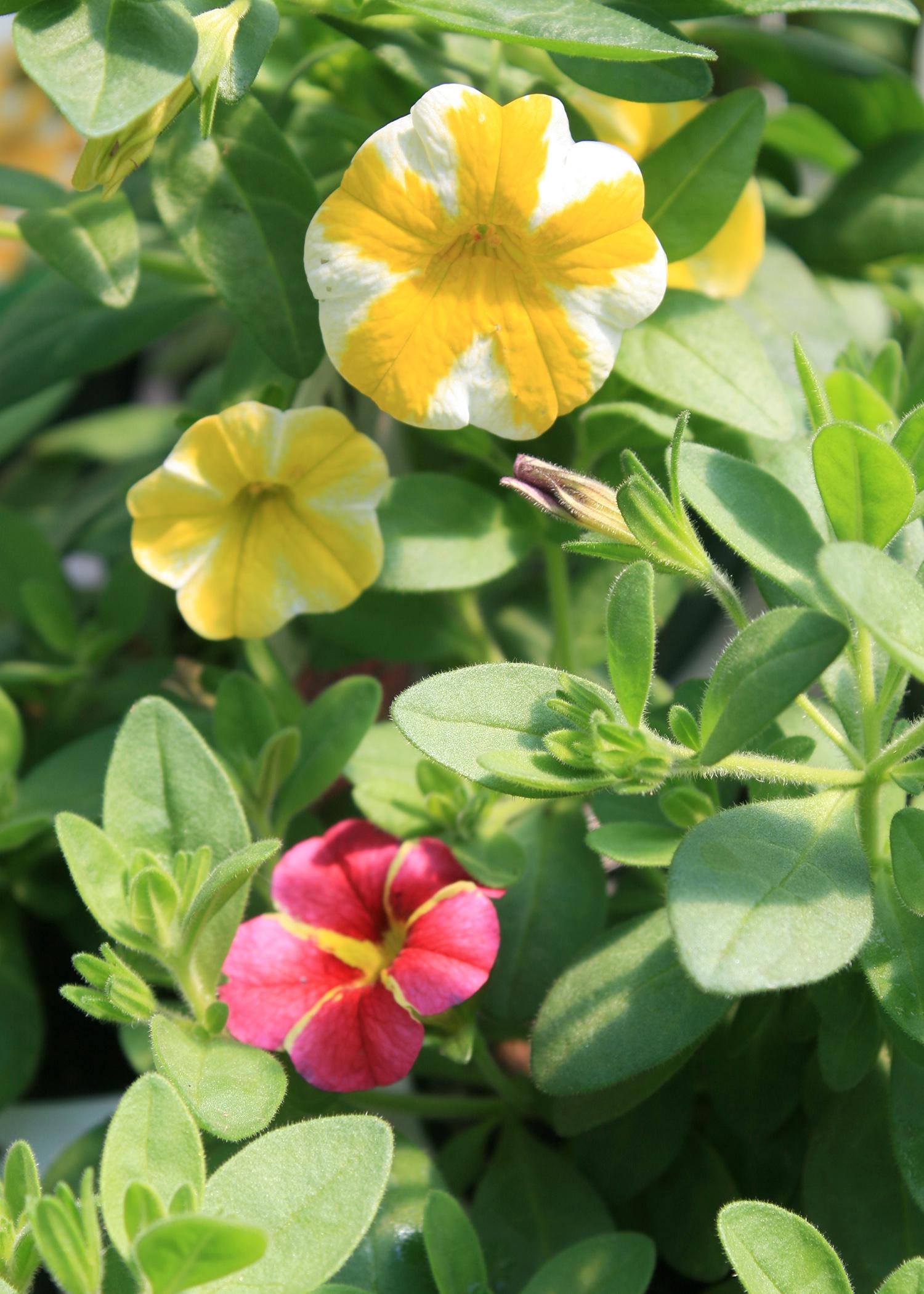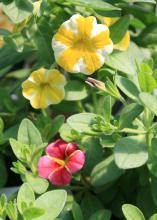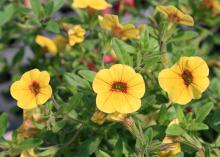Information Possibly Outdated
The information presented on this page was originally released on May 6, 2013. It may not be outdated, but please search our site for more current information. If you plan to quote or reference this information in a publication, please check with the Extension specialist or author before proceeding.
Million Bells varieties provide summer colors
If we ever move into the warmer – even hotter – summer season, I’m looking forward to the prolific flowering of calibrachoa. These plants are commonly known as “million bells,” which is a good description because it seems these plants have a million flowers.
Many selections of million bells are sold under different series names, and they seem to come in every color of the rainbow. One of the best qualities of these plants is that they are self-cleaning, so deadheading in not required.
Each year, new -- and in my opinion, better -- varieties are introduced to dazzle our summer gardens and landscapes with bright flashes of color. Calibrachoa show off their abundant flowering against the background of dark foliage.
I’m really impressed with Superbells, which is a series hybrid of calibrachoa that has many beautiful and colorful flowers. The flower colors I like best are Cherry Star, which is a bright magenta red with a yellow starburst; Lemon Slice, which is a lemon-yellow and white bicolor; and Saffron, which has golden yellow petals with red highlights in the center.
Gardeners may think Superbells look like petunias because they have larger flowers than other calibrachoa. They’re nearly right, as Superbells are indeed related to petunias. But unlike petunias, these plants aren’t sticky.
Superbells planted in the landscape can spread and scramble up to 48 inches tall, depending on the variety. But the landscape soil must be well-drained, as these plants don’t like to have wet feet. Raised beds are a must.
I’m beginning to believe that that very best way to grow and enjoy Superbells and other calibrachoa is in containers and hanging baskets. In containers, they will grow up to 10 inches tall with trailing and spreading growth that will hang beautifully over the edges of the container.
At planting, add some controlled-release fertilizer and regularly apply a balanced, water-soluble fertilizer like 20-20-20 or 20-10-20. This feeding will help ensure the foliage maintains its dark green color and the flowering is nonstop.
Superbells tolerate trimming very well, which helps gardeners keep the plant dense and full. Pruners aren’t necessary, but at planting, use sharp scissors to trim the tips of the branches back a little. Later on in the summer, around the end of July or the beginning of August, give the plant an overall “haircut” to stimulate more growth on plants that have started to open up in the center.
Make sure you fertilize right after trimming the plant back. Any time a plant starts to get a little unruly, go ahead and trim it again to make a neater appearance.
One of the characteristics I like best about Superbells is that after a summer rainstorm, these plants recover and perk up faster than many other summer-flowering annuals.









